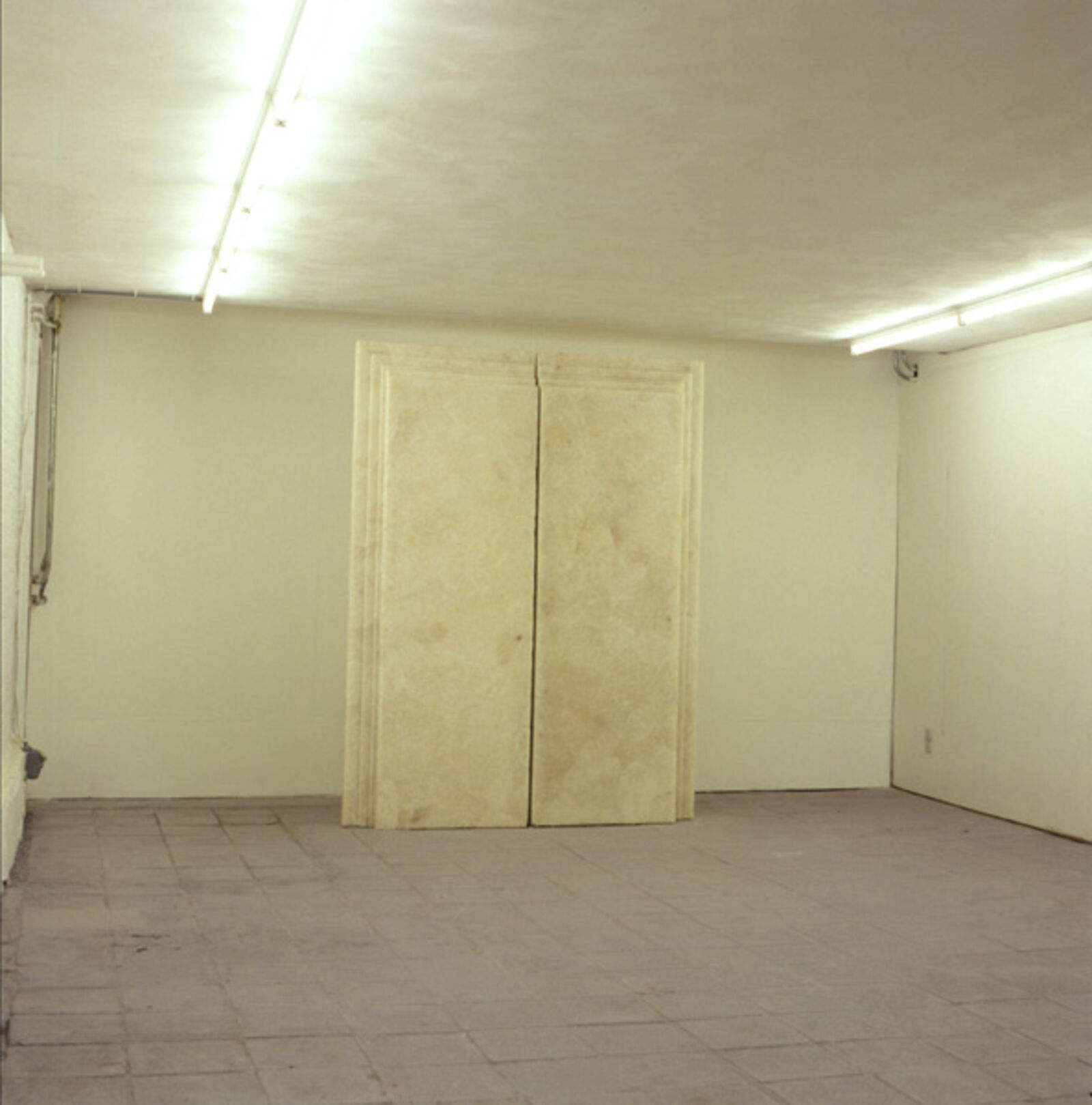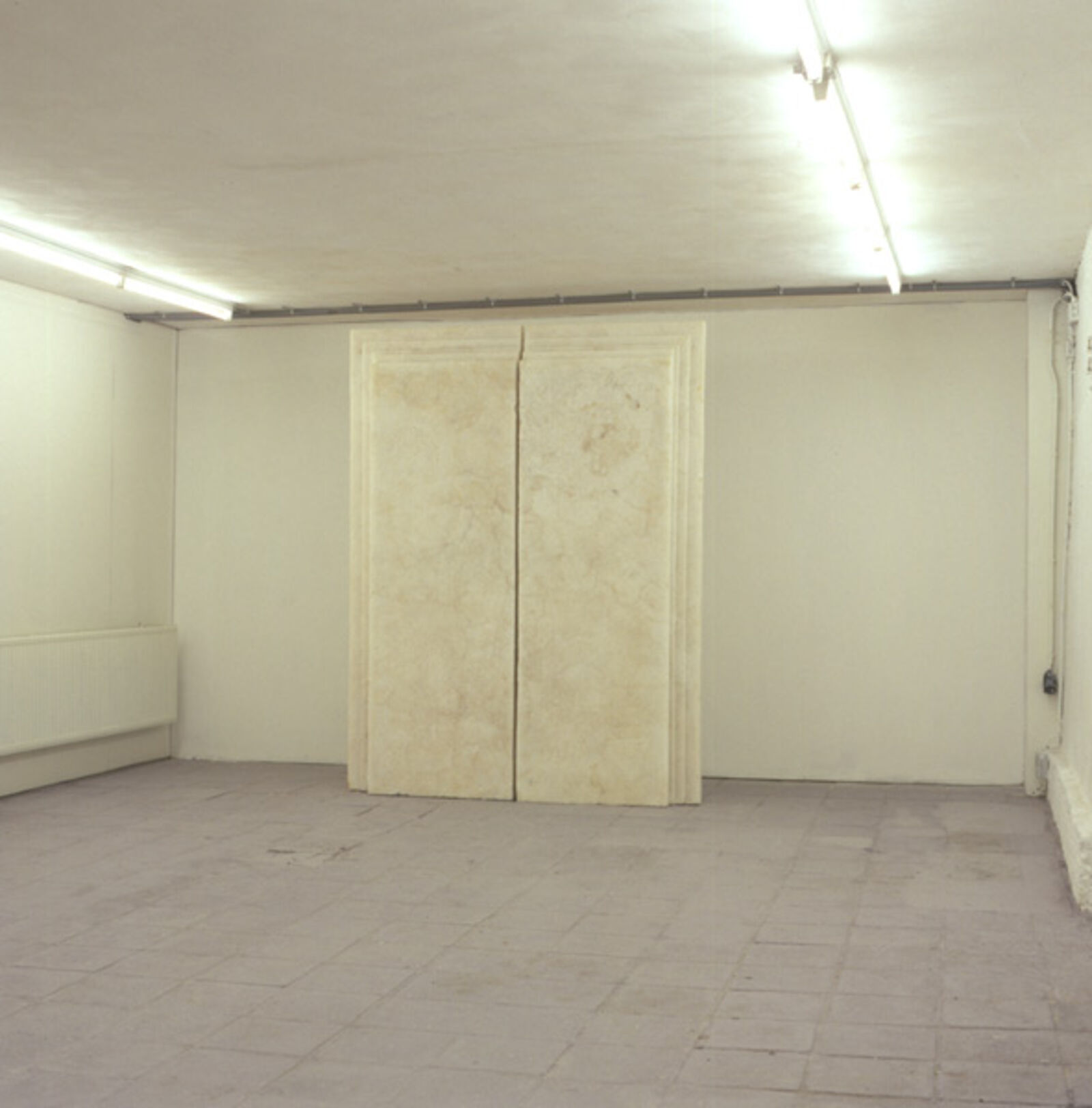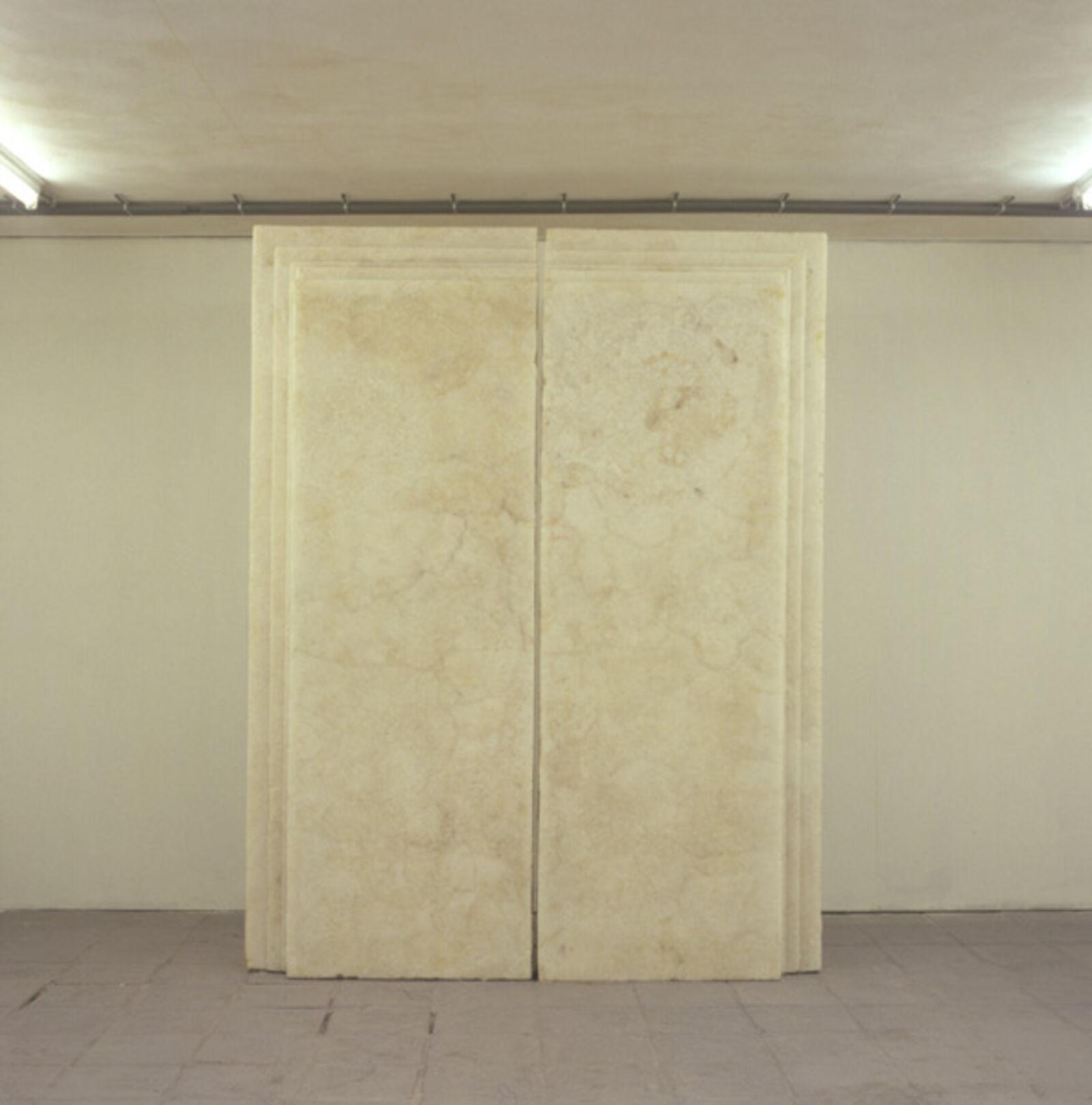Jan van de Pavert "Facing Doors"
21.03–11.04.1987
de Appel, Prinseneiland 7, Amsterdam
de Appel, Prinseneiland 7, Amsterdam

Facing Doors I
© Edo Kuipers
© Edo Kuipers

Facing Doors II
© Edo Kuipers
© Edo Kuipers

Facing Doors III
© Edo Kuipers
© Edo Kuipers

Facing Doors IV
© Edo Kuipers
© Edo Kuipers
‘Since Jan van de Pavert (1960) left Ateliers '63 - after attending the St. Joost Academy in Breda - his pieces apparently have little in common. Tracing the outline of a drawing by the Renaissance architect Galli Bibiena, and copying an existing piece of decorative stucco-work onto a vertical wall, half of which disappears into the ceiling, seem like studies in architectural decoration from a bygone era. But also the negative impression of a plinth made in paraffin or the casting of doors and door-mouldings look more like a careful analysis of architectural motifs. No personal signature, a reticence allowing no other form of expression except the making of choices. Choosing the studied motif, choosing the means of execution, choosing in the placing. Analytical and precise, with great interest in casting and moulding, Van de Pavert elevates architectural elements with (or without) a functional character to autonomous works. He doesn’t choose ashlar, wood or marble but paraffin so that the relation with 'the moulding' remains extremely vivid. Plinths, thresholds of door-frames are 'reproduced' in this brittle and translucent material. In the fascination for the moulding and casting the same urge for duality, for symmetry can be detected as in his mirror effects; in the inversion of a drawing by Galli Bibiena, in the 'complementation' of the half stucco ceiling. The plinths and frames have also been handled symmetrically and sometimes the negative form (the impression) creates a new 'arena' in itself, like in Double Gallery. Van de Pavert knows how important scale is: he enlarges a plinth and a door so that they are not immediately perceived as an ordinary door and frame. Or he reverses the function by inverting the form: a negative plinth becomes a small theatre. Studying a particular motif and choosing a specific space define the changing forms of Jan van de Pavert's three-dimensional oeuvre. At De Appel's request, he has made a work especially suited to the low anterior space: these are two cast doors whose physical presence is underlined by the doubling.’ (‘Translucent architecture’, Newsletter De Appel, 2 (1987) 1.)